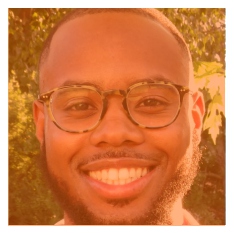Each submission gets timestamped with EST time and gets a unique identifier
assigned, example:
S10056


by: Alicia Olushola Ajay, Architect Magazine
Unveiled this summer, the NOMA Foundation Fellowship placed 30 NOMAS students in eight-week paid internships at prominent firms across the country. Largely supported by a partnership with the AIA Large Firm Roundtable, the initiative aims to further the careers of graduates of color, while inspiring the profession to see the untapped talent that has been too long neglected. Here are the stories of this year’s fellows.
In-San Chiang
B.Arch 2020, Illinois Institute of Technology
Gresham Smith

In this fellowship I am focusing on healthcare architecture, which is an area where I had very little experience. I am doing research and conducting a systematic literature review about circulation in the surgical room. This really opens a new chapter in my architecture knowledge.
I think the hardest challenge for me so far is the uncertainty we have at the moment due to COVID-19. I am not sure when and which firms are still hiring, and how the way we work and think as architects is going to change. We recent graduates have to make our own paths, so it is a little scary. But the education and experience I have gotten make me more confident.
My ambition for my career is to get licensed and work for a firm that focuses on connecting people together. I think architects should be more aware of the positive impact we can provide for society.
Walter Hunt
BS.Arch 2020, Kent State University
CannonDesign
Los Angeles

The fellowship means a lot to me because it gives me a platform to continue to learn, develop professionally, and do great things. Currently, I am working on an education research project and I am studying all 23 campuses of California State University. I am focusing on innovative learning devices and spaces that promote successful cross-functional collaboration.
The hardest challenge so far in pursuing architecture as a career is graduating during the current economic and political conditions. Although these are tough times, I am motivated to make a true difference in the world. My dream is to own an integrated design practice and help others flourish by getting involved in the community. I am already living a portion of this dream by giving back to the same school system that I was once a part of. I am teaching students about the AEC industry through the ACE Mentorship Program.
Nimah Mohiuddin
M.Arch. 2022, Illinois Institute of Technology
MASS Design Group
Boston

I’m working with Jha D Williams at MASS Design. She’s a NOMA member. So far I have been doing a little bit of research and a little bit of design work. I’m visibly Muslim and I’m an Asian woman, and so for some people that is hard for them to understand. In high school, I looked online for different resources of how I could understand what architecture was or how I could get involved. That’s when I stumbled upon the ACE Mentor Program, which connects high school students with professionals in the architecture, construction, and engineering fields. That’s where I found mentors involved in NOMA, like Richie Hands. And they introduced me to the Project Pipeline summer camp. Getting involved with ACE and NOMA as a high school student, that was such a turning point. If I hadn’t done that, I wouldn’t be in architecture.
It’s important for firms to realize that we’re so much more than our identity, but also I do want them to see my identity because that’s where I am. So while I think it’s important to make space for people of color and Black people, you should also be hiring us because we deserve to be there versus to fill a space or fill a number. The fellowship’s role in this has been super important because they’ve given us the foot in the door into these amazing firms and created this partnership program. And then these firms can see that we have so much to give.
Diana Hernandez Serrano
M.Arch 2022, California Baptist University
HED
Los Angeles

This fellowship has given me a lot of encouragement and has motivated me to continue working hard. I am learning valuable research skills, which I believe are critical in order to derive a strong design concept. I am excited to be researching the effects of the pandemic on K-12 schooling and proposing solutions.
I am a first-generation college student, and although I count on my family’s unconditional support, oftentimes they cannot help me like they wish they could. I did not have an example to look up to growing up so I’ve had to figure everything out as I go. Even now, I do not know any architect with a background quite like mine. Thankfully, my amazing mentors have assisted me every step of the way. If it weren’t for them, I do not believe I would have made it this far.
I have always believed that exemplary architecture directly responds to its current needs and context. We seem to be quick to offer innovative solutions without taking the time to truly understand the past and its destructive patterns. As architects, it should be our responsibility to research every aspect of a community, so that we may promote effective collaboration and harmony among it.
Ola Odukoya
B.Arch 2020, Illinois Institute of Technology
Callison RTKL
Chicago

The fellowship has been a really insightful opportunity to get to understand the inner workings of a large firm like Callison RTKL, collaborating with designers all over the country on various projects. What drew me to architecture is where I am from: Lagos, Nigeria. I was interested in solving urban problems like heavy traffic congestion and improving housing quality for people that need it. My father also is an architect back in Nigeria, so it was an easy sell for me.
My dream is to become a licensed architect. Then I hope to go back to Nigeria to continue my practice designing spaces that are sustainable and indigenous to Nigerian culture. The hardest challenge so far is always realizing that I am one of the few Black students or designers in the space. Sometimes I have to remind myself that I belong in the profession and my voice should be heard without any fear or judgment.
I feel that as architects we should always try to be sensitive to who we are designing for. I am hopeful that the profession is waking up to the importance of having a staff of diverse designers who actually reflect the makeup of the cities they are designing for.


Each submission gets timestamped with EST time and gets a unique identifier
assigned, example:
S10056


Your ID: S12312312






This notification means your entry was sent successfully to the system for review and processing.
If you have any further questions or comments, reach out to us via the main contact form on the site
Have a great day!







New to NOMA?
Create your account
Already have an account?
Sign in

Not A NOMA Member? Click Here!
Create your account
